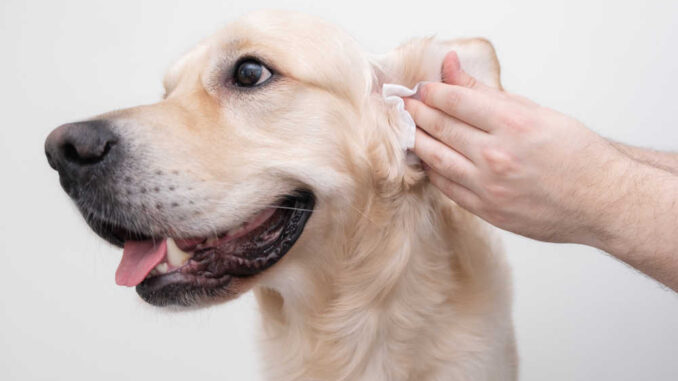
This article was updated on October 19th, 2023

The presence of black gunk or discharge in a dog’s ear is an extremely common reason that pet parents bring their dog to our veterinary clinic. They are right to do so, as black gunk can be a sign of an ear infection or other ear conditions that need veterinary treatments.
The discharge is often a combination of ear wax, dirt, and other debris that has accumulated in the ear canal. In some cases, the discharge may be dark brown or black in color due to the presence of dried blood, as shown on the picture below.
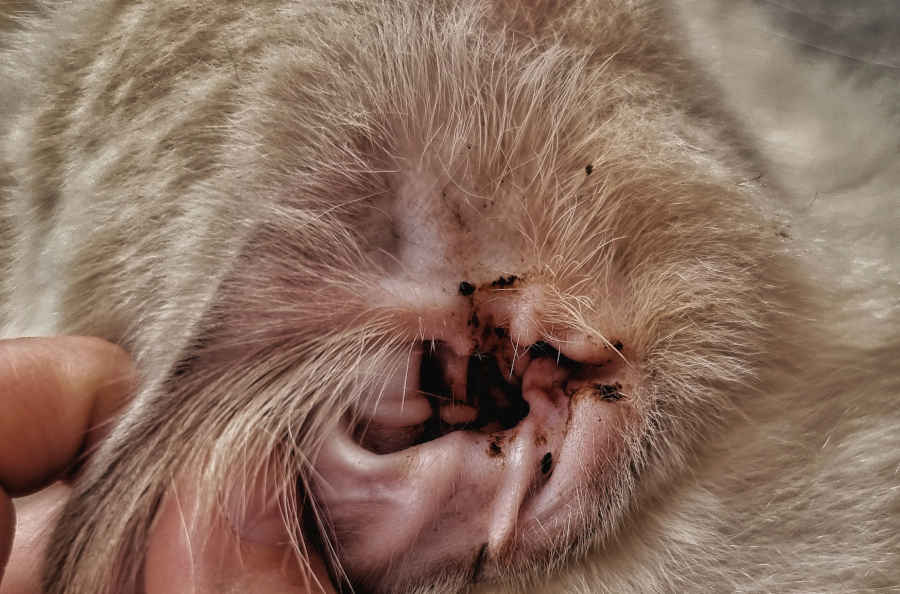
In this article, we will review:
- what a normal dog’s ear should look like,
- the top causes of black gunk or debris in a dog’s ear, and
- how to help your dog.
What a normal ear looks like
A normal dog’s ear will be clean and have the appearance of pink, healthy skin, as shown in the picture below:
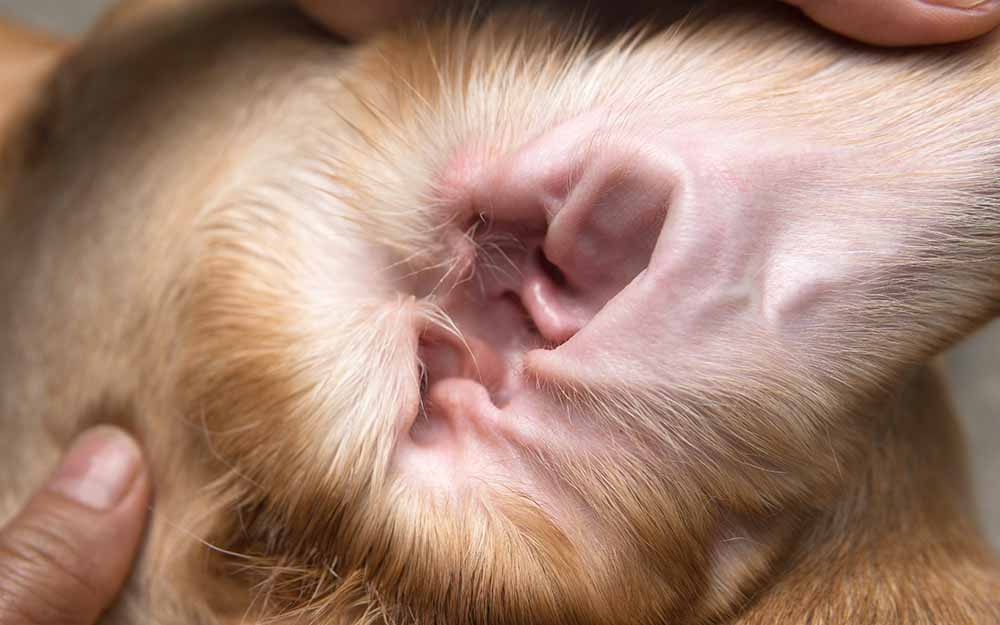
4 common causes of black gunk (discharge) in a dog’s ears
The most common causes include:
1. Ear infections
Ear infections are the most likely cause of black gunk or debris in a dog’s ear.
How do you know if your dog has an ear infection?
The black discharge is usually accompanied by other symptoms, including:
- Head shaking
- Tilting head to the side or holding ear(s) in an abnormal way
- Scratching or rubbing at the ear(s)
- Redness, irritation or swelling of the ear canal
- Scabbing or crusting around the ear(s)
- Foul odor from the ear(s)
- Painful ear(s) when touched
Below is a picture of dark debris observed in a dog’s ear as a result of an ear infection. The external ear canal also appears red and inflamed.

Expert tip:
“The issue in your dog’s ear is more likely to be an infection if it has a foul odor when sniffed.”

Most simple ear infections are caused by bacteria and/or yeast and will resolve within two weeks of treatment with topical products containing antibiotics, antifungals, and anti-inflammatories.
Learn more about Ear Infections & Home Remedies for Mild Ear Infections.
2. Allergies
Dogs with allergies frequently develop chronic or recurrent skin and ear infections. This can lead to the accumulation of black discharge in the ear. Dogs can be allergic to fleas, food, or something in the environment. Below is a picture of a pug’s ear with redness and black debris as a result of allergies:
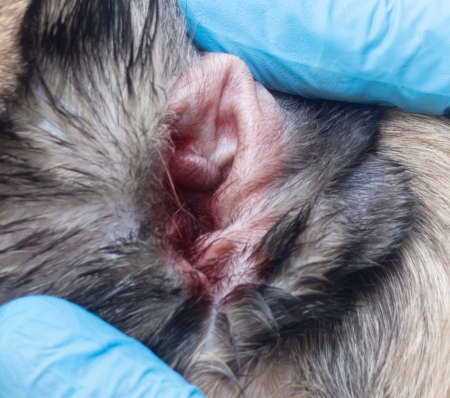
How do you know if your dog’s black gunk in ears is due to allergies?
Dogs with allergies often exhibit symptoms such as itchy skin, red rash, hair loss, and secondary infections. Allergies can be extremely frustrating for both dogs and pet parents, as even dogs with well-managed allergies can experience flare-ups.
Learn more about Allergies Causing Ear Infections.
3. Something in the ear canal
Sometimes foreign objects, such as grass or foxtails, can become lodged in a dog’s ear, leading to irritation and inflammation. This will likely cause the same signs as an ear infection, and may lead to discharge or debris.
Your vet may be able to examine and remove the object on otoscopic exam or perform an ear flush under sedation or anesthesia. Additionally, some animals can develop masses within the ear canal.
4. Ear mites
Most pet parents have heard of ear mites. These tiny infectious parasites, known as Otodectes cynotis, live in the ear canal and cause pruritus (itching), irritation, and inflammation. However, they are actually not very common in dogs.
In addition to causing clinical signs of an ear infection, ear mites lead to the accumulation of black discharge in the ear, which is often described as looking like coffee grounds. Below is an example of dark brown/black debris in a dog’s ear due to ear mites:
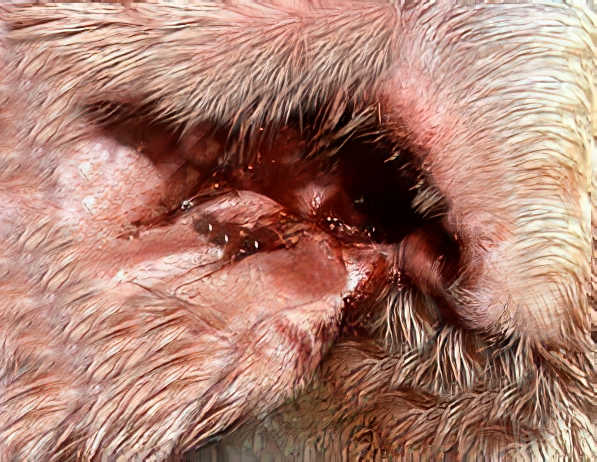
Diagnosing ear mites involves your vet taking a swab from your dog’s ear to examine under the microscope, in which the mites will be easily visible.
“Ear mites in dogs (as opposed to cats) are relatively rare, and the issue is much more likely to be an infection.”

5 easy tips to help your dog
If you notice black gunk in your dog’s ears, it’s important to have them examined by a veterinarian to determine the underlying cause and receive proper treatment. The tips below are not a substitute for proper veterinary care. Here are some general steps you can take to help your dog (while you wait for your vet appointment):
1. Keep the ears clean
Use a gentle ear cleaner recommended by your veterinarian to clean your dog’s ears. Gently wipe away any debris using a clean cloth or cotton ball. Do not use cotton swabs, as they can push debris further into the ear canal and cause injury. Learn more about ear cleaning solutions for dogs.
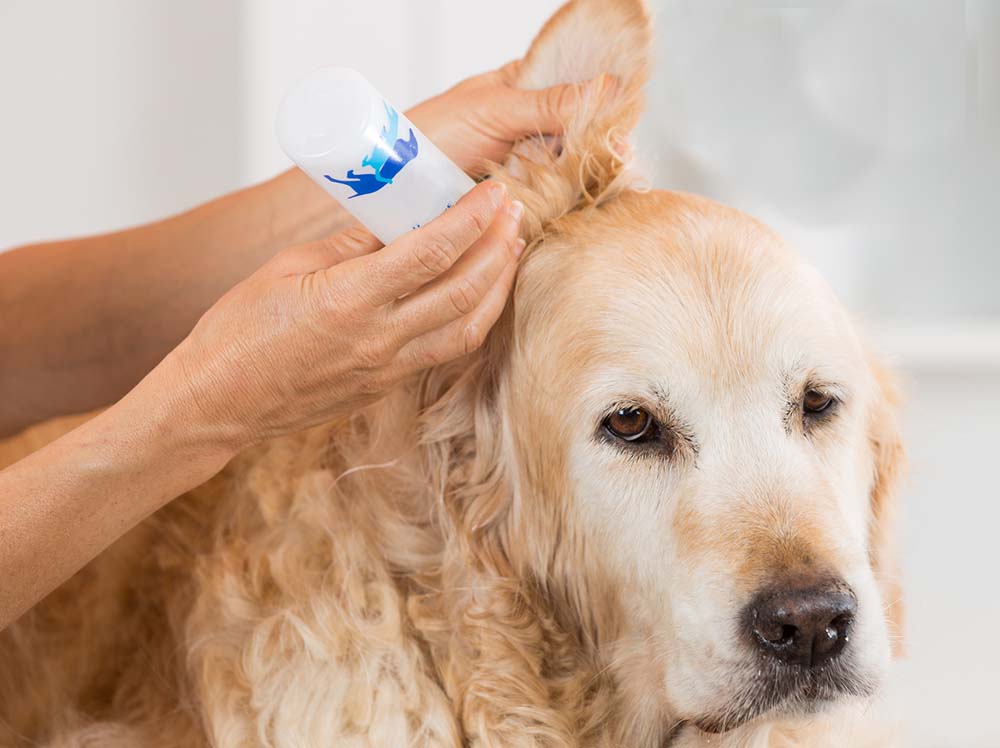
2. Keep the ears dry
Moisture can exacerbate ear issues, so it’s important to keep the affected ear as dry as possible. If your dog is a frequent swimmer or loves to get their ears wet in the bath, they may benefit from an ear cleaner containing a drying product.
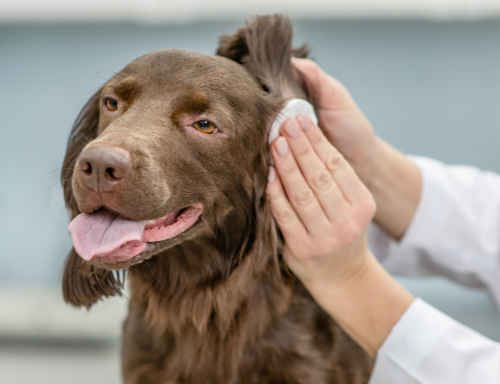
3. Prevent scratching
Ear issues can be very uncomfortable for dogs, and they may scratch or rub their ears excessively. This can lead to further irritation and potential injury. If this is the case with your dog, you may need to use an Elizabethan collar (cone) to prevent your dog from scratching their ears.
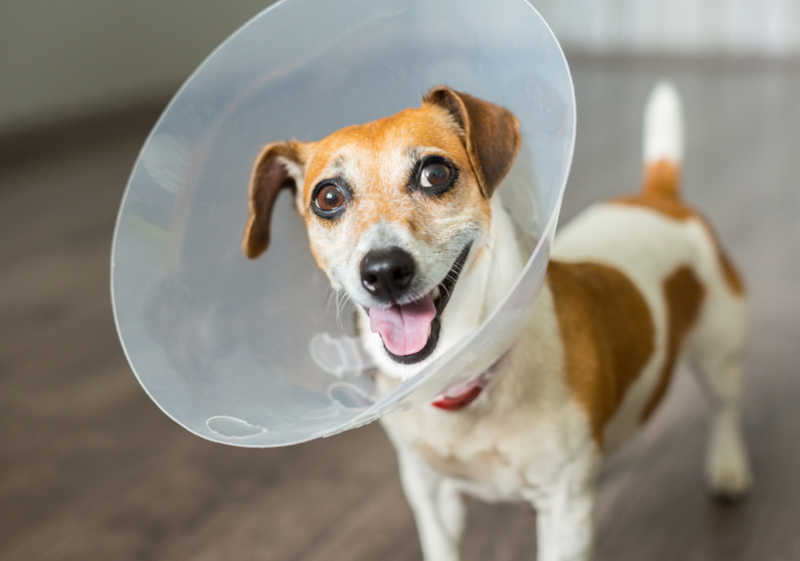
4. Carefully monitor for improvement
Keep an eye on your dog’s ears and monitor for any signs of improvement or worsening. If the black gunk does not improve or if your dog exhibits other concerning symptoms, such as shaking their head or whining in pain, contact your veterinarian for further evaluation.
5. Do NOT put anything else in your dog’s ear
Never put anything into your dog’s ear that has not been recommended or approved by your veterinarian. Not only do these products fail to treat ear infections, they can actually cause your dog additional pain and irritation, and lead to significant and permanent damage if your dog has a ruptured eardrum.
Ear infections rarely clear up without veterinary treatment
If you catch an ear infection in the early stages and it appears to be mild, you can try to manage it at home (read our article with home remedies for ear infections).
Be aware that ear infections rarely clear up without the appropriate veterinary treatment. Delaying veterinary care might make things worse for your dog – and ear infections can make dogs miserable.
If the symptoms get worse or persist without signs of improvement, schedule an appointment with your veterinarian.
Signs you need to see your vet ASAP
If your dog’s mild ear infection is not improving with cleaning at home after a couple of days, OR you notice the following signs, it is important to see your vet as soon as possible.
- Painful ears
- Blood or purulent (pus) discharge in the ears
- Change in hearing or balance
- Ear hematoma (swelling of the ear flap)
- Other signs of systemic disease such as decreased appetite or lethargy
Read More:
Most Common Ear Infections in Dogs
Home Remedies for Dog Ear Infections
Dog Ear Wax Color Chart: What Do These Colors Mean?
Disclaimer: This website's content is not a substitute for veterinary care. Always consult with your veterinarian for healthcare decisions. Read More.


Be the first to comment